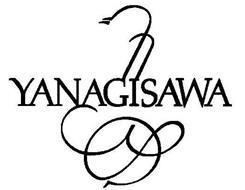Founded 1896 | ||
 | ||
Yanagisawa ss991 soprano sax demo wichita band instrument co
Yanagisawa Wind Instruments is a Japanese woodwind company known for its range of professional grade saxophones. Along with Yamaha they are one of the leading manufacturers of saxophones in Japan. The company currently manufactures sopranino, soprano, alto, tenor and baritone saxophones.
Yanagisawa was founded as a family-owned brasswind company in 1896 but only started producing saxophones following World War II. They initially offered repair and modification services for saxophones, then started limited production of instruments based on those that came through their repair shop. They started regular production with the release in 1954 of their T3 silver-plated tenor saxophone, followed in 1956 by the A3, their first alto saxophone. The T3 model Tenor and the A3 model Alto were based on a Martin Committee III design. They were followed by the T4, A4, T5, and A5 models in the mid-1960s, based more on a Selmer Mark VI design. There has been continuous development of their saxophone technology ever since. Their product line was expanded with the introduction of the B6 baritone saxophone in 1967 and S6 soprano in 1968. Starting in the late 1960s, Yanagisawa exported saxophones sold under various distributor's names, providing a large portion of the instruments sold under the Vito (Japan) brand, as well as the Martin brand (after 1971). In 1978 the 800 series models were introduced, which became the first Yanagisawa saxophones exported under Yanagisawa's own name. In 1980, the 500 series was introduced for sale under other brands in the student/intermediate market. The Yanagisawa name soon became known for the impeccable workmanship, accurate intonation, and playability of its products. With the growth of Yanagisawa's reputation, interest in finding Yanagisawa instruments sold under other brands has become heightened in the used instrument market. Their soprano saxophones became the standard that much of the rest of the industry seeks to emulate. Yanagisawa introduced innovations including detachable straight and curved necks and a high G key for its 990 series soprano saxophones.
The company is notable for making saxophones from materials other than the standard brass, i.e., phosphor bronze and solid silver, and combinations thereof. Their first solid silver saxophone was produced in 1972 and instruments made from phosphor bronze began to be produced in 1992. The 8830 model alto and tenor saxophones, introduced in 1988, combined silver necks and bells with a brass body tube, reminiscent of the King "Silversonic" instruments. Similar combinations are offered in current production, as illustrated by Yanagisawa's 2015 range of alto saxophone offerings:
The permutations are increased by the fact that it is possible to buy a solid brass, silver, or bronze neck from Yanagisawa and fit it to any of the nine instruments listed above e.g. adding a solid silver neck to the Awo10 or Awo20, or a phosphor bronze neck to the Awo10, Awo33J or Awo37 etc.
Professional saxophonists performing on Yanagisawa instruments include Gary Bartz, Jay Beckenstein, Plas Johnson, Ed Wynne, Steve Slagle, Peter King, Vincent Herring, Snake Davis, Greg Osby, and Antonio Hart.
